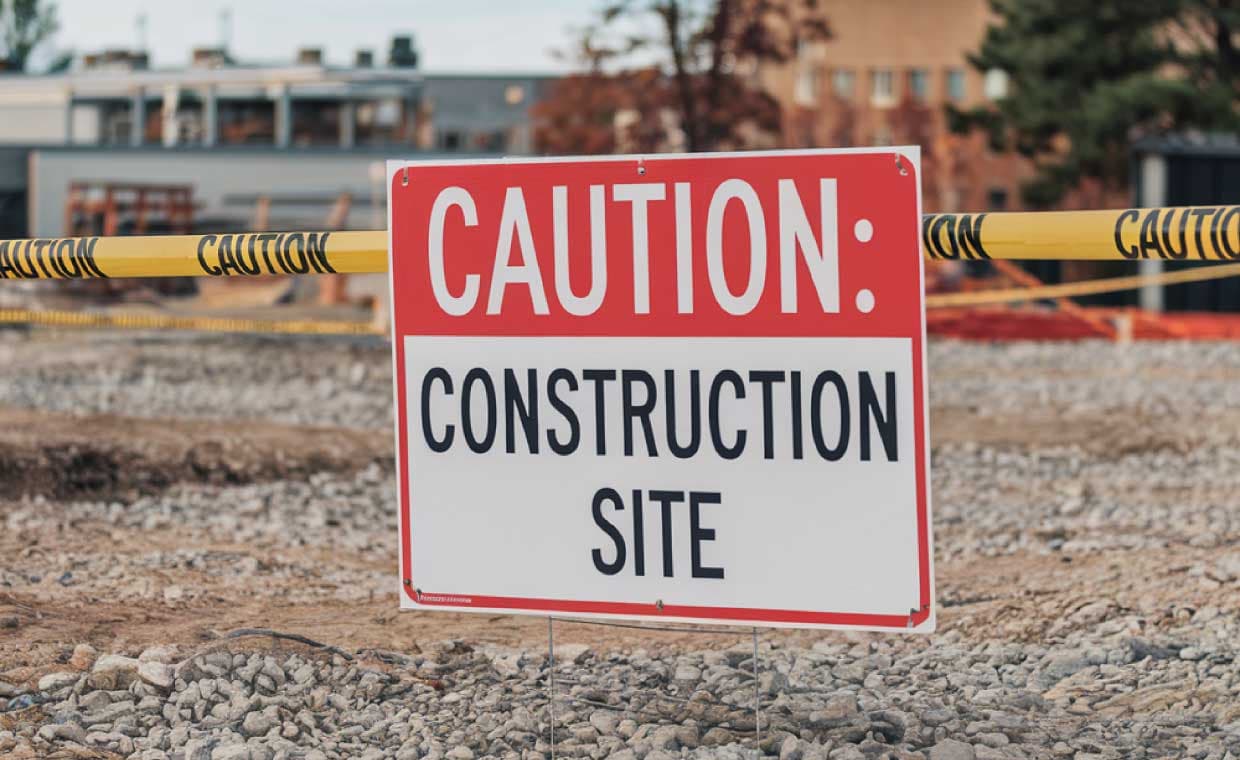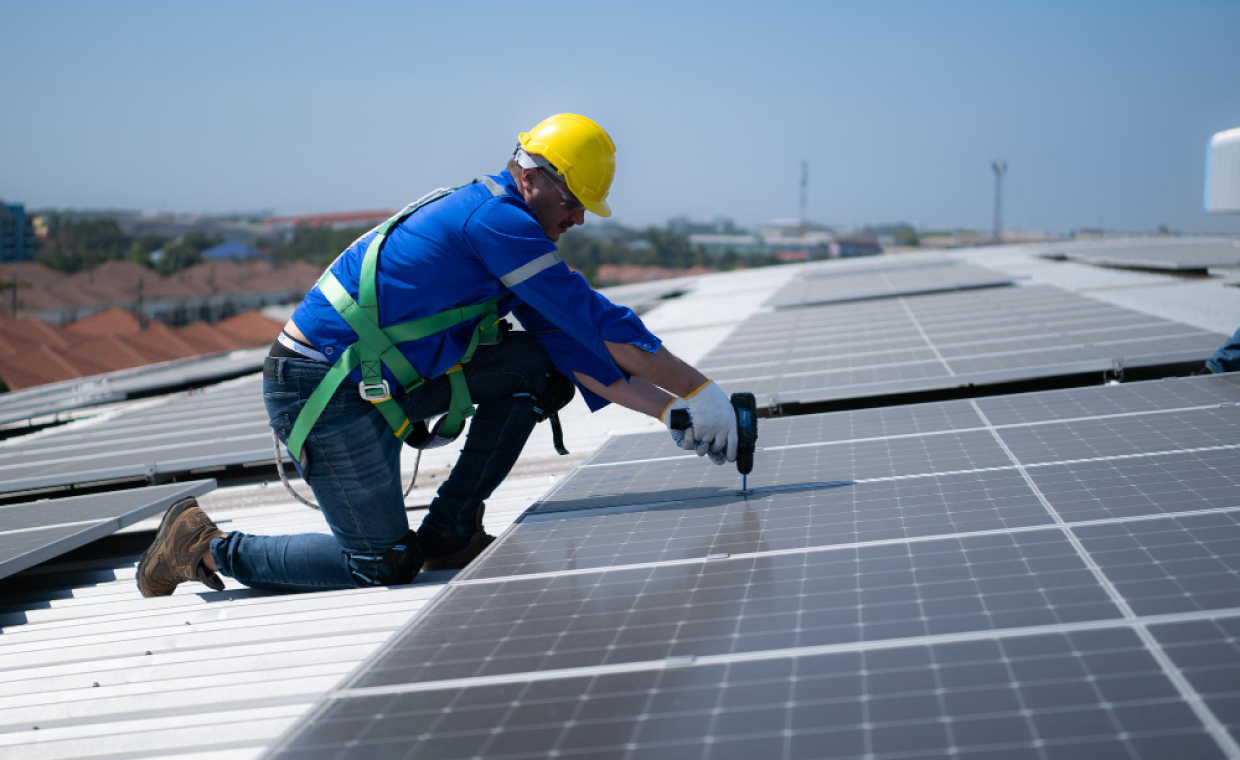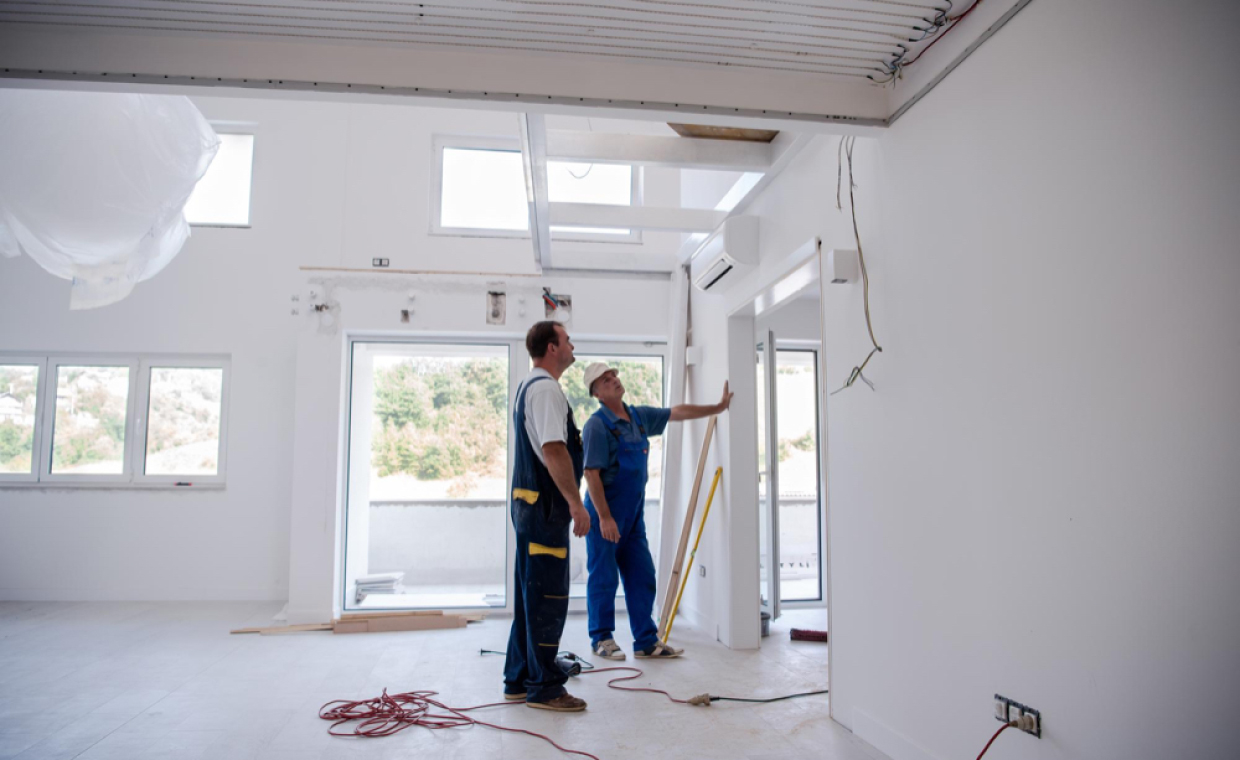
Table of Contents
If you’ve ever walked through a city or town under development, you’ve probably faced the frustrating experience or dangers of construction sites. One minute, you’re strolling along a familiar sidewalk, and the next, you’re stopped in your tracks by a row of orange cones, a massive hole in the pavement, and a sign that says, “Sidewalk Closed. Use Other Side”.
This might not seem like a big deal at first. After all, construction is necessary to improve roads, upgrade buildings, and fix underground utilities. But for pedestrians, these work zones can be more than just a minor inconvenience, they can be dangerous. Without clear pathways, proper signage, or safe detours, people often find themselves stepping into traffic, walking over unstable ground, or dodging falling debris.
So how exactly do construction zones put pedestrians at risk? More importantly, how can you stay safe when navigating them? Let’s break it down.
The Hidden Dangers of Construction Sites

At first glance, construction sites might seem well-organized. There are workers in hard hats, barricades in place, and bright-colored signs directing traffic. But from a pedestrian’s perspective, these zones often feel chaotic.
01. Blocked or Disrupted Sidewalks
The most immediate problem pedestrians face in a construction zone is a blocked or damaged sidewalk. Sometimes, an entire section is missing, forcing people to find another way around. If there’s no alternative route provided, pedestrians often have to choose between walking on the street, squeezing between barriers, or backtracking a long distance to find a safe crossing.
Even when a sidewalk remains open, it’s not always in great shape. Uneven surfaces, loose gravel, and temporary walkways make it easy to trip or lose footing. For individuals with disabilities, parents pushing strollers, or older adults, these obstacles can be even more challenging.
02. Confusing or Missing Signage
When construction zones are set up properly, there should be clear signs directing pedestrians where to go. But that’s not always the case. Sometimes, signs are too small to notice, placed in odd locations, or even missing entirely. Other times, they direct people toward an alternative path that abruptly ends, forcing them to figure out another way through.
This lack of clear guidance can lead pedestrians straight into unsafe areas. If someone is unfamiliar with the area or in a hurry, they might not realize they’re stepping into a danger zone until it’s too late.
03. Falling Debris and Unstable Surfaces
Most people don’t think about what’s happening above them when walking near a construction site, but they should. Workers high up on scaffolding may be handling tools, materials, and heavy equipment, and even a small object falling from a height can cause serious injuries.
Then there’s the issue of unstable ground. Construction zones often have open trenches, half-paved streets, or areas covered in dust and loose dirt. Rain can make these areas muddy and slippery, while snow and ice create even greater hazards.
04. Construction Vehicles and Heavy Machinery
Large construction vehicles, like bulldozers, dump trucks, and cranes are a common sight in work zones. The problem is that these machines are big, loud, and have massive blind spots. Drivers and operators might not always see pedestrians, especially if they’re focused on maneuvering equipment or following worksite instructions.
Unlike regular cars on the road, construction vehicles don’t always stay in predictable lanes or follow standard traffic patterns. A pedestrian who isn’t paying attention could end up dangerously close to moving equipment without realizing it.
05. Nighttime Hazards and Poor Lighting
Construction sites can be difficult to navigate in daylight, but they’re even trickier at night. If an area is poorly lit, it’s much harder to see uneven pavement, misplaced barriers, or debris on the ground. Drivers may also struggle to see pedestrians walking near a construction zone, increasing the risk of accidents.
For people walking home after work or out for an evening stroll, poorly lit work zones can be a serious concern. Without proper visibility, it’s easy to take a wrong step or be caught in a dangerous situation.
06. When Accidents Happen
If a pedestrian is injured in a construction zone due to negligence, such as poorly marked detours, falling debris, or unsafe conditions the best thing they can do is get legal help. A lawyer who specializes in pedestrian injuries can help determine if the construction company or city is responsible.
In many cases, these accidents could have been prevented if proper safety measures had been in place. Seeking legal advice can be crucial in covering medical expenses and holding the responsible parties accountable.
How Construction Sites Put Pedestrians in Danger?

The dangers of construction zones don’t just come from the obstacles themselves. The way pedestrians are forced to react to these situations can put them at even greater risk.
01. Pedestrians End Up Walking in the Street
When sidewalks are blocked and no alternative path is provided, pedestrians are often left with no choice but to walk on the road. This puts them directly in the path of moving vehicles. Drivers may not expect to see pedestrians walking so close to traffic, which can lead to accidents.
In busy cities, where traffic moves quickly and distractions are everywhere, this problem becomes even more serious. A single moment of inattention from a pedestrian or driver can have devastating consequences.
02. Distractions and Confusion Lead to Unsafe Decisions
Construction zones can be overwhelming, with loud noises, bright lights, and constant movement. All of this can be distracting, making it harder to focus on staying safe.
When people are confused about where to walk, they might make risky choices like stepping over barriers, crossing streets in unsafe spots, or following other pedestrians who are also lost. These split-second decisions can lead to accidents that could have been avoided with better planning and signage.
How to Stay Safe on Construction Sites?

There are several things you can do to protect yourself, such as:
01. Stay Aware of Your Surroundings
It’s easy to get lost in thought or distracted by your phone while walking, but when you’re near a construction site, it’s important to stay alert. Pay attention to where you’re stepping, watch for signs directing foot traffic, and keep an eye out for moving vehicles.
Avoid wearing headphones at full volume, as they can make it harder to hear warning signals or approaching traffic.
02. Use Marked Crosswalks and Safe Routes
If a construction zone blocks your usual path, look for designated detours or crosswalks. Even if it means taking a slightly longer route, it’s worth it to stay on a safe, well-lit path instead of risking a dangerous shortcut.
03. Make Yourself Visible, Especially at Night
If you’re walking near a construction zone at night, wear light-colored clothing or reflective gear so drivers and workers can see you. Carrying a small flashlight or using your phone’s flashlight can also help make sure you’re visible in poorly lit areas.
04. Report Dangerous Conditions
If you notice a construction site that doesn’t provide a safe way for pedestrians to pass, report it to local authorities. Cities and towns are responsible for ensuring that construction zones are accessible and safe for everyone.
Bottom Line
Construction zones may be a necessary part of urban development, but they don’t have to be a nightmare for pedestrians. By staying aware of potential hazards, using safe routes, and making sure you’re visible, you can reduce your risk of accidents and injuries.
The next time you come across a construction site blocking your way, don’t just assume you have to risk it. Take a moment to find the safest way through. Your safety is worth more than saving a few extra minutes on your walk.
Also Read: Construction Safety Matters: Ensuring a Safe Work Environment






























